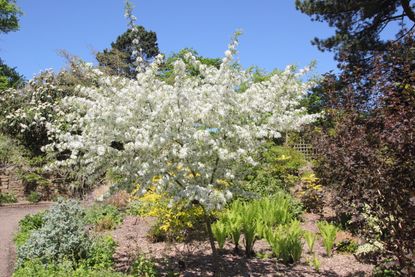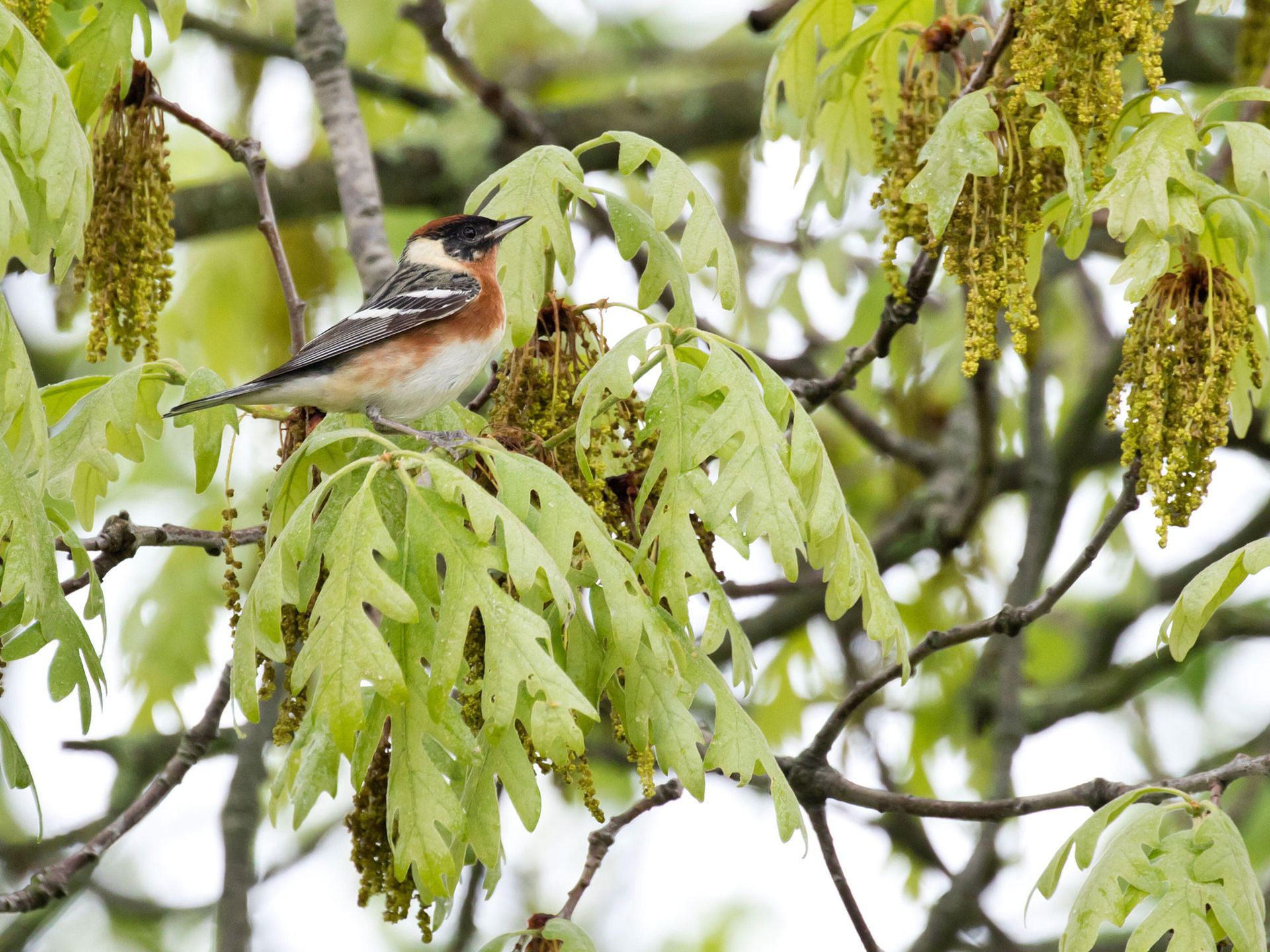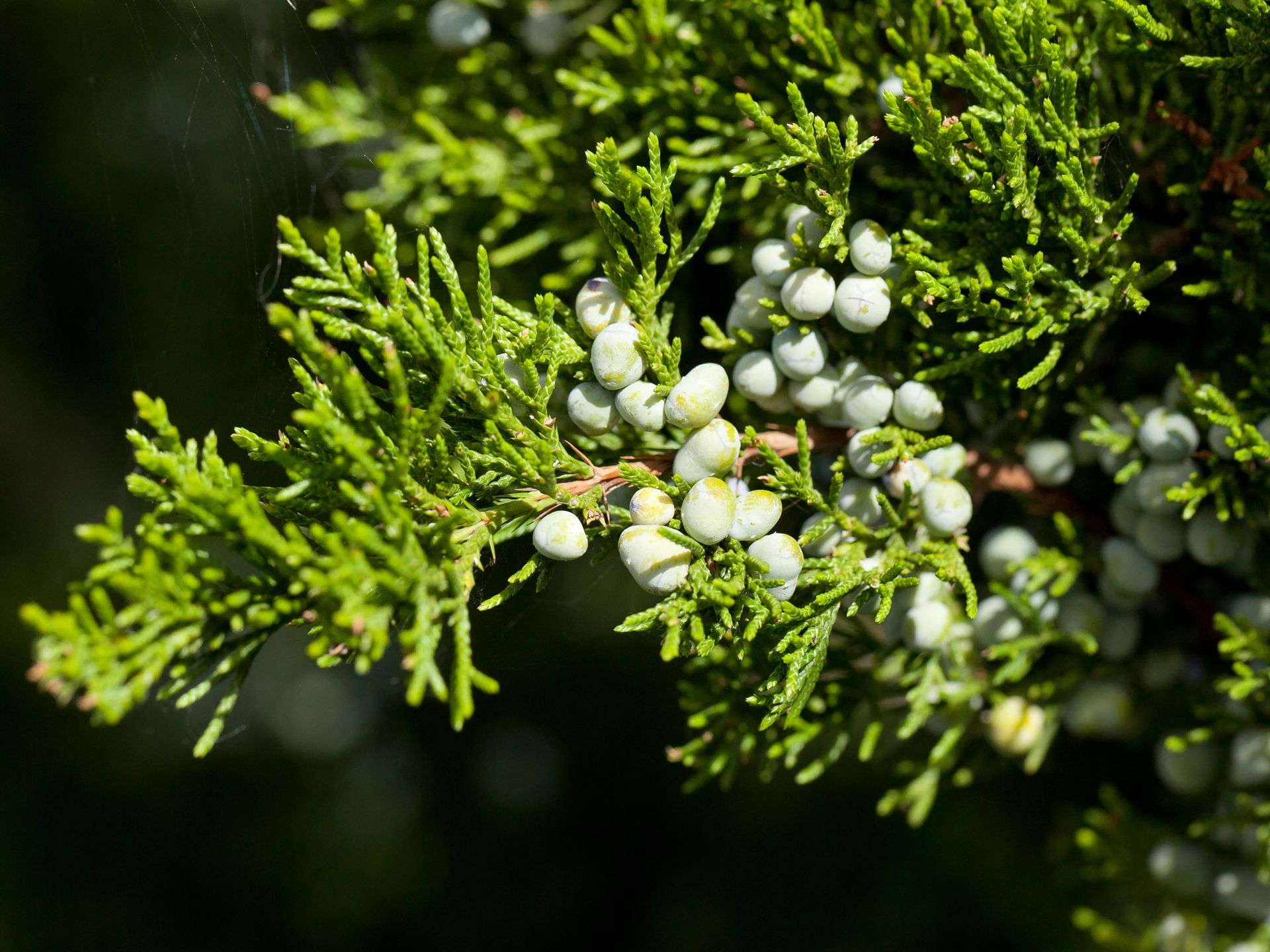'They'll be so good for your soul!" The 8 best trees to bring songbirds to your backyard - chosen by garden experts
These 8 best trees to bring songbirds to your backyard will add pretty foliage, flowers and berries to your back yard too

Creating a backyard that will attract colorful songbirds enhances the wildlife credentials of your outdoor space like nothing else while also promoting a harmonious ecosystem. Planting bird-friendly trees that offer food, shelter, and a place to nest is the easiest way to make your garden the No 1 hangout spot for birds in the neighborhood. And they'll be so good for your soul, helping to create a space you can easily commune with nature.
The best time to plant trees for songbirds in your backyard is typically in the fall or early spring as this allows the roots to establish before summer temperatures start to rocket. As ever it's good to think local, and research the best trees for songbirds that will work in your area according to their likes and nesting habits. Remember that different types of songbirds thrive in different types of trees.
If you have space, plant a variety of trees, and create a layered understory of shrubs and ground cover plants to max up the foraging opportunities for birds. Now find out more with our expert selection of the best trees for songbirds.
8 of the best trees for songbirds
'The best trees for attracting songbirds will depend on the location and climate of your neighborhood, as well as the type of songbirds you're trying to attract,' says Dr Charles van Rees, a professional conservation scientist, ornithologist, and naturalist. 'Different species of plants will do better in different soil types, or with different amounts of available water. The severity of winters in your area can also make a big difference and will eliminate certain options.'
The types of trees you introduce to your backyard will determine what kind of habitat you're creating. This, in turn, determines which birds will show up. 'My general advice is to plant native species,' says Charles. 'These will either provide fruit or seeds that some songbirds like to eat, or will be a good food source or attract the types of insects that other songbirds like to eat. Songbirds are also more likely to view native species as familiar and accessible habitat for nesting.'
1. Northern white oak

Bay breasted warbler in a white oak tree
Oak trees provide excellent habitats for a variety of birds, with their dense foliage offering a safe place to rest and nest. They're also one of the best trees for privacy, for the same reason.
'My favorite tree for songbirds in the Eastern United States is the Northern white oak,' says Dr Charles van Rees. 'In the spring, these oaks are relatively slow to leaf out, and their buds and catkins are food for tons of tiny, barely noticeable inchworms. These inchworms are the nutrition-packed jet-fuel that helps beautiful migratory songbirds make their annual springtime migrations through North America from the tropics.'
During March, April, and May (depending on how far North or South you are), white oaks, as well as other deciduous oaks, will attract a colorful parade of warblers, vireos, tanagers, and other songbirds that feed on native insects.

2. Eastern red cedar

This sturdy evergreen tree provides year-round shelter for birds. The blueberry-like berries are a favorite of many species, including cedar waxwings and bluebirds, and a valuable food source in the winter months. The dense foliage also offers excellent shelter and nesting opportunities.
'The Eastern red cedar is drought-tolerant and adaptable to various soil conditions, making it a good low-maintenance choice,' says gardening expert and landscaper David Andre of the Sprouted Home. 'The delightful serenade of songbirds can truly elevate your backyard experience, and trees play a vital role in attracting these winged wonders. They offer shelter, nesting sites, and, depending on the species, food sources such as berries or insects.'

3. Crabapple

A Baltimore oriole in a blossom-packed crabapple tree
The crabapple is a great choice as one of the best trees as its fruits and seeds are loved by both songbirds and insects. 'Plant a crabapple in your yard and you can expect to see robins, bluebirds, cardinals, finches, and more,' says Ben McInerney, director of Home Garden Guides.
Crabapples are small ornamental trees that are ideal for compact yards. They produce a significant crop of fruit in the fall. Their dense branching structure provides good nesting sites. They're a great privacy tree for a small backyard.
'If you want to attract songbirds to your yard, I also recommend planting crabapple trees,' says Tom Monson, found of Monson Lawn & Landscaping. 'These trees not only bear small, tart apples that serve as a great source of food for birds, but they also offer a perfect nesting spot.' They require minimal maintenance and have a long blooming season, making them a great addition to any yard.

4. Dogwood

Dogwood trees are another great choice for attracting birds. They produce small, reddish berries that birds (especially robins and cardinals) love to eat, and their white or pink blossom in spring and bright red leaves in fall make them a beautiful addition to any yard.
'Dogwoods are deciduous trees that dazzle with their spring flowers and vibrant fall foliage,' says David Andre. 'But it's their clusters of red or white berries that really make them a bird paradise. Species such as Flowering Dogwood (Cornus florida) and Kousa Dogwood (Cornus kousa) are particularly loved by birds.'
There's more good news in that these medium-sized trees require very little maintenance too. 'Keep your trees well-maintained and provide a good source of food, such as bird feeders, to attract even more birds to your yard,' says Tom Monson. 'With the right combination of trees and bird feeders, your yard will soon be filled with beautiful songbirds.'

5. Chokeberry

Choosing a single tree that works for the whole of the US is impossible, as birds are adapted to the native varieties of their regions. But if you can locate and grow one of these native trees, birds will abound.
'If you were to push me to recommend a single type of tree to attract birds, I would suggest chokecherry for most of North America,' says Zach Hutchinson, owner of Flocking Around LLC, and ornithologist at the nation's largest bird conservation group. 'This is a shrub-to-tree-sized woody variety that flowers, produces highly desired berries, attracts native insects, and has dense branching, which provides safety for birds.' Its size also makes it an attractive option for small yards.
'Those living in the southern US may find this a tough plant to grow, so for their region, my recommendation is possumhaw, a woody plant providing many of the same needs as chokecherry,' adds Zach.

6. Magnolia

A sweetbay magnolia tree
'The magnolia is a stunning tree that's popular for its large, fragrant flowers, which bloom in the spring,' says Sara Lundberg, owner of Bloom & Haul. 'It is also a great tree for attracting wildlife, as the fruit provides food for birds and insects.'
Sweetbay magnolia is a great variety to go for, with its large, sweet-smelling, creamy white flowers from spring through July, and bright red fruits in late summer and fall. The fruits will attract a variety of birds including woodpeckers, tanagers, grosbeaks, cardinals and finches.
This attractive native ornamental tree will even thrive in a patio container, where you can enjoy its aromatic, spicy foliage and flowers up close. The best trees to grow in pots can still attract birds - a good fact to know for a smaller space.

7. American holly

A cedar waxwing bird in an American holly tree
Holly trees are excellent for birds, and they're also a good choice for small yards. They provide a source of food for birds during the fall and winter months. In fact, planting a variety of trees that produce fruit, nuts, and seeds throughout the year is a good idea as it can help attract a more diverse range of bird species to your yard.
'The evergreen American holly (Ilex opaca) produces bright red berries in winter, providing a valuable food source when other foods are scarce,' says Ben Hilton, founder and editor of The Gardening Fix. 'The dense foliage provides excellent shelter for nesting birds too.'
Meanwhile Dr Charles van Rees points out that in the Southeast, native varieties like the Yaupon savannah holly are also great for berry-eaters.

8. Hawthorn

An American robin enjoying some hawthorn berries
'Another excellent tree for attracting songbirds is the hawthorn,' says Tom Monson. 'In the springtime, these trees are adorned with beautiful white flowers, and in the fall, they produce small, red berries that are a favorite among many bird species, such as robins, waxwings, and cedar waxwings. Hawthorns are hardy trees that require little care, making them a good low-maintenance option too.'
If you’re looking for a tree to attract wildlife to your yard, hawthorn is a great choice. As well as birds, it will also entice butterflies and bees. It's a beautiful ornamental tree too, with glossy dark green foliage in summer that filters sunlight, and the leaves turn into shades of fiery yellow and orange in fall. In winter, frost on the berry covered branches looks particularly attractive.

What are the best bird-friendly trees for US planting zones?
ISA-certified arborist Dana Karcher, expert at Davey Tree, has given us a list of bird-friendly evergreen and deciduous trees for a variety of planting zones. 'The best trees for birds are native to your area. Other important factors are how much fruit the tree provides, what insects the tree attracts, and the shelter the tree provides for nesting and safety. The following list cover at least one of those qualities.'
So if you're looking for ideas for the best trees for songbirds, be sure to consult the following list:
- Zones 2-7: Common chokecherry, eastern red cedar, paper birch, blue spruce
- Zones 3-8: Black cherry, crabapple, winterberry holly, eastern white pine
- Zones 4-8: Red mulberry, American beech, serviceberry, white oak
- Zones 5-9: Flowering dogwood, hawthorn, American holly, firethorn
- Zones 7-10: Magnolia, crepe myrtle
Be The First To Know
The Livingetc newsletter is your shortcut to the now and the next in home design. Subscribe today to receive a stunning free 200-page book of the best homes from around the world.
Lifestyle journalist Sarah Wilson has been writing about flowers, plants, and garden design and trends since 2015. Having already studied introductory garden and landscape design as well as a course in floristry she is currently adding to her list of qualifications with an RHS Level 2 course in the Principles of Plant Growth and Development. In addition to livingetc.com, she's also written for homesandgardens.com, gardeningetc.com, Modern Gardens and Country Homes & Interiors magazines.
-
 The 12 Best Table Lamps for Reading —I'm a Certified Bookworm (and Shopping Expert)
The 12 Best Table Lamps for Reading —I'm a Certified Bookworm (and Shopping Expert)When it comes to table lamps for reading, I don't mess around. If you're the same, this edit is for YOU (and your books, or course — and good recommendations?)
By Brigid Kennedy Published
-
 "It's Scandi Meets Californian-Cool" — The New Anthro Collab With Katie Hodges Hits Just the Right Style Note
"It's Scandi Meets Californian-Cool" — The New Anthro Collab With Katie Hodges Hits Just the Right Style NoteThe LA-based interior designer merges coastal cool with Scandinavian simplicity for a delightfully lived-in collection of elevated home furnishings
By Julia Demer Published

